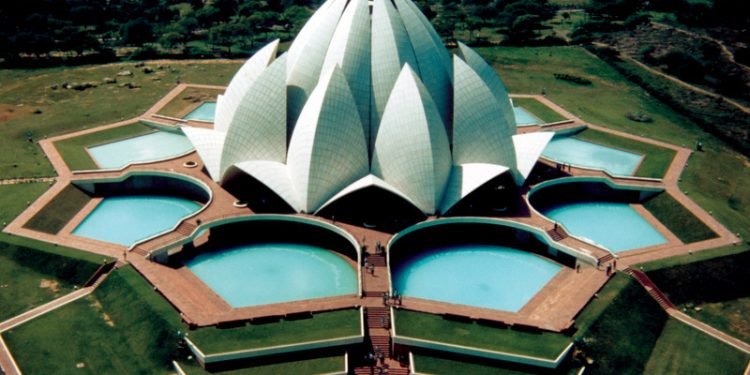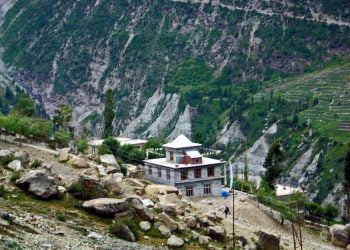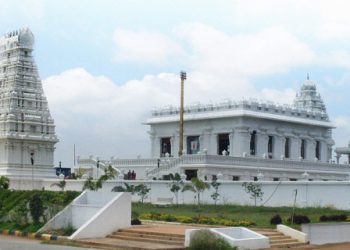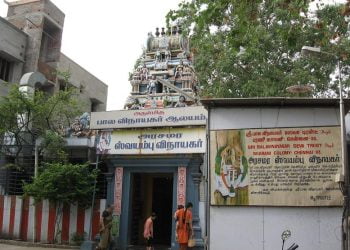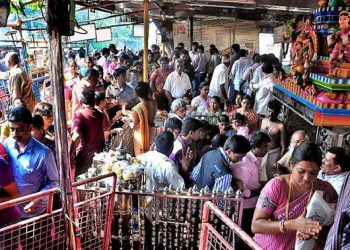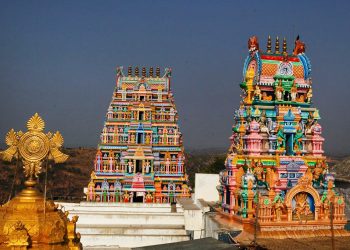The Lotus Temple, located in New Delhi, India, is a Bahá’í House of Worship completed in 1986. Notable for its flowerlike shape, it serves as the Mother Temple of the Indian subcontinent and has become a prominent attraction in the city.

Legends Associated with This Shrine
Like all other Bahá’í Houses of Worship, the Lotus Temple is open to all, regardless of religion, or any other distinction, as emphasised in Bahá’í texts. The Bahá’í laws emphasise that the spirit of the House of Worship be that it is a gathering place where people of all religions may worship God without denominational restrictions.
The Bahá’í laws also stipulate that not only the holy scriptures of the Bahá’í Faith but also those of other religions can be read and/or chanted inside the House of Worship regardless of language; while readings and prayers can be set to music by choirs, no musical instruments can be played inside. Furthermore, no sermons can be delivered, and there can be no ritualistic ceremonies practised.
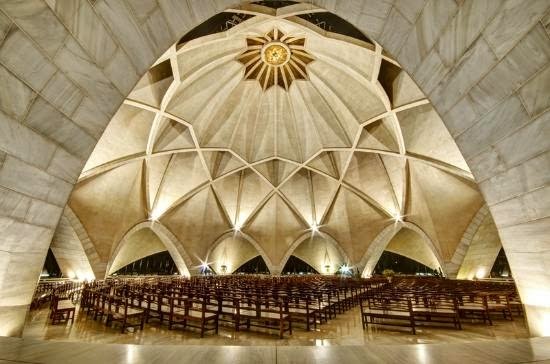
Architectural Relevance of This Shrine
All Bahá’í Houses of Worship, including the Lotus Temple, share certain architectural elements, some of which are specified by Bahá’í scripture. `Abdu’l-Bahá, the son of the founder of the religion, stipulated that an essential architectural character of a House of Worship is a nine-sided circular shape. While all current Bahá’í Houses of Worship have a dome, this is not regarded as an essential part of their architecture. Bahá’í scripture also states that no pictures, statues or images be displayed within the House of Worship and no pulpits or altars be incorporated as an architectural feature.
Model of the temple at the information centre Inspired by the lotus flower, the design for the House of Worship in New Delhi is composed of 27 free-standing marble-clad “petals” arranged in clusters of three to form nine sides. The nine doors of the Lotus Temple open onto a central hall slightly more than 40 metres tall that is capable of holding up to 2,500 people. The surface of the House of Worship is made of white marble from Penteli mountain in Greece, the very same from which many ancient monuments and other Bahá’í Houses of Worship are built. Along with its nine surrounding ponds and the gardens, the Lotus Temple property comprises 26 acres .
The site is in the village of Bahapur, in the National Capital Territory of Delhi. The architect was an Iranian, who now lives in Canada, named Fariborz Sahba. He was approached in 1976 to design it and later oversaw its construction. The structural design was undertaken by the UK firm Flint and Neill. The major part of the funds needed to buy this land was donated by Ardishír Rustampúr of Hyderabad, Sindh, who gave his entire life savings for this purpose in 1953. The construction company was ECC Construction Group of Larsen & Toubro Limited. A portion of construction budget was saved and used to build a greenhouse to study indigenous plants and flowers that would be appropriate for use on the site.
Shrine’s Map Location and How to Go There
By Road
Buses from all the major places in Uttar Pradesh, Punjab, Haryana, Himachal Pradesh, Madhya Pradesh and Rajasthan are available for getting to Delhi. During the summer months, air-conditioned coaches are recommended. Delhi Transport Corporation (DTC) operates special services from railway stations to different parts of the city.
By Rail
Delhi is the hub of the Indian Railways network with Express trains to all parts of the country. The city has two major railway stations in New Delhi and Old Delhi. New Delhi station is within walking distance of Connaught Place and Main Delhi station is about 7km from Connaught Place. Delhi offers Express trains to all parts of the country. For the foreigners, tickets are available at the International Tourist Bureau (Ph: 011-3346804), located at New Delhi station. The main ticket office is at the IRCA building on Chelmsford Road, Pahar Ganj, between New Delhi station and Connaught Place.
By Air
Delhi is the main gateway city for northern India with a modern airport. All major international airlines in the world fly through Delhi. Indira Gandhi International Airport is located at 23km south-west of Central Delhi and the domestic terminal at Palam is 5km away from the international terminal.
Shrine Timings
Summer (April to September): 9:00 a.m. to 7:00 p.m., Winter (October to March): 9:30 a.m. to 5:30 p.m. Mondays Closed.
Extra Information About this Shrine
Awards 1987, the architect of the Bahá’í House of Worship, Mr Fariborz Sahba, was presented the award for excellence in religious art and architecture by the UK-based Institution of Structural Engineers for producing a building “so emulating the beauty of a flower and so striking in its visual impact”. 1987, the Interfaith Forum on Religion, Art and Architecture, Affiliate of the American Institute of Architects, Washington, D.C., gave their First Honour award for “Excellence in Religious Art and Architecture” 1987 to Mr F. Sahba for the design of the Bahá’í House of Worship near New Delhi. 1988, the Illuminating Engineering Society of North America conferred the Paul Waterbury Outdoor Lighting Design Award – Special Citation for Exterior Lighting 1989, the Temple received an award from the Maharashtra-India Chapter of the American Concrete Institute for “excellence in a concrete structure”. 1994 edition of Encyclopaedia Britannica, in its ‘Architecture’ section, gives recognition to the Temple as an outstanding achievement of the time. 2000, Architectural Society of China as one of 100 canonical works of the 20th century in the recently published “World Architecture 1900-2000: A Critical Mosaic, Volume Eight, South Asia”. 2000, GlobArt Academy, based in Vienna, Austria, presented its “GlobArt Academy 2000” award to the architect of the Lotus Temple, Fariborz Sahba, for “the magnitude of the service of Taj Mahal of the 20th century in promoting the unity and harmony of people of all nations, religions and social strata, to an extent unsurpassed by any other architectural monument worldwide.”





































